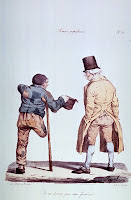 Happy Jane Austen Week, everyone! I’m so excited to see our annual tribute to everything Jane on the blog. But first things first–I have a new cover! The Shy Duchess will be out in March 2011, and is a spin-off from the Diamonds of Welbourne Manor anthology. (I think this looks exactly like Lady Emily–and I seriously want to steal her tiara…). The Harlequin Historical Advent Calendar contest Diane mentioned yesterday is still going strong (my day is the 16th–you can go to my website to see details! You can win a grand prize of a Kindle, or any number of daily prizes). And I’ll be at the Borders True Romance blog tomorrow!
Happy Jane Austen Week, everyone! I’m so excited to see our annual tribute to everything Jane on the blog. But first things first–I have a new cover! The Shy Duchess will be out in March 2011, and is a spin-off from the Diamonds of Welbourne Manor anthology. (I think this looks exactly like Lady Emily–and I seriously want to steal her tiara…). The Harlequin Historical Advent Calendar contest Diane mentioned yesterday is still going strong (my day is the 16th–you can go to my website to see details! You can win a grand prize of a Kindle, or any number of daily prizes). And I’ll be at the Borders True Romance blog tomorrow!
And Christmas is flying at us! It’s busy around here, making Christmas candy, finishing the shopping, getting over a throat infection (yuck!). I’ve also been working at the part-time job, teaching a children’s ballet class, as I get them ready for their winter recital this weekend, a smaller version of The Nutcracker. It’s pink tulle, snowflakes, and craziness! And then I had to find something to write about for Jane Austen Birthday week (which is also my mom’s birthday week), and couldn’t think of anything. I’ve already talked about my favorite Austen novel (Persuasion) and my first Austen novel (Emma), and great Austen gifts (you can never go wrong with the Jane action figure!). But what to write about this year???
 Since I’m buried in The Nutcracker, I started to wonder–what would it be like if Austen (or one of her contemporaries?) wrote the story? For one thing, there would be lots of opportunity for some great Regency-style costumes!
Since I’m buried in The Nutcracker, I started to wonder–what would it be like if Austen (or one of her contemporaries?) wrote the story? For one thing, there would be lots of opportunity for some great Regency-style costumes!
Let’s say Lady Whatsit is having her annual Christmas Ball at her grand estate of Whatsit Park, an invitation much sought after by every member of the ton. She has a claret punch, a roast goose, and fruit cakes, and copious decorations of holly and ivy with red bows. (No tree of course–they’re Regency, not Victorian! Maybe a giant stalk of ivy will have to grow out of the ballroom floor when the scene changes). There’s waltzing and flirting in the conservatory. Lady Whatsit’s two adorable children, Lady Clara and Lord Bratley, attend the party, and their godfather, the eccentric Lord Lotsamoney, gives them gifts. Clara’s is a nutcracker doll (were there such things in the Regency? I don’t know…), in the shape of–let’s say Wellington. Lord Bratley (who lives up to his name) snatches it from his sister and breaks it!
 Lady Clara is heartbroken. She sneaks down after the party, bandages up poor Wellington, and falls asleep. But she’s not alone for long. Along come the French army of nefarious mice! Wellington battles them valiantly, and Clara helps out by tossing her shoe at Napoleon Mouse’s head. The French are run out of the drawing room!
Lady Clara is heartbroken. She sneaks down after the party, bandages up poor Wellington, and falls asleep. But she’s not alone for long. Along come the French army of nefarious mice! Wellington battles them valiantly, and Clara helps out by tossing her shoe at Napoleon Mouse’s head. The French are run out of the drawing room!
In gratitude, Wellington takes Lady Clara to a grand campaign tent where the Sugar Plum Fairy (who is emphatically not Harriette Wilson) introduces her to all the grateful nations of Europe, who dance for her. Spain, Russia, China (don’t know how they got in there), etcetera. They shower her with sweets, tiaras, and gowns before she dances once more with Wellington and is then whisked back home again!
 What is your favorite part of The Nutcracker? If they made an Austen novel into a ballet, which should it be? (I’d love to see a Pride & Prejudice ballet!) To one commenter on today’s post, I have a copy of Jane Austen: An Illustrated Anthology!
What is your favorite part of The Nutcracker? If they made an Austen novel into a ballet, which should it be? (I’d love to see a Pride & Prejudice ballet!) To one commenter on today’s post, I have a copy of Jane Austen: An Illustrated Anthology!










